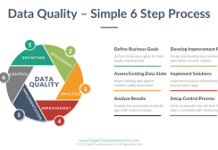The average e-commerce business owner uses database without his slightest knowledge. More often, ecommerce stores uses database for three main reasons namely;
• Maintenance of product catalogues
• Tracking business transactions
• For non-product related purposes like blog posts
Different database types can be used to address the above needs. While others are more popular than the rest, there are databases that are commonly used by most ecommerce businesses.
Relational Databases
The basic description of a relational database is a collection of spreadsheets with each one having a rows and columns of data. The striking difference between this database and common spreadsheets is that the contained data in relational database bear a connection.
Take the simple case of an ecommerce relational database having distinct tables for customers and orders. Ideally, there is a relationship between the orders and the customers such that is order is associated with a particular customer. The relationship is expressed in such a way that the data elements of an order points to a specific customer.
One awesome aspect of relational databases is that it reduces redundancy and thereby intensifying efficiency. For instance, a change in a customer’s information will only require single editing exercises. Take the case of change in email address for instance. You will only need to change the details in one row of the customer table without affecting the orders table. Subsequently all orders related to that customer will automatically be associated with the new email address.
Do you want to start an Amazon FBA business and need to write a plan? If YES, here is a sample Amazon FBA business plan template & FREE
Ideally, relational databases are perfect for contents that are not product related. They are also ideal for transaction processes. This type of database also comes handy when it comes to design of product catalogues, especially when you are handling overwhelming numbers of combinations like sizes and colours. Over the years, they have grown more popular in the ecommerce industry. Some of the most common examples include MySQL, Oracle, and PostgreSQL.
Also Read: Essential Trends You Must Follow To Establish And Boost Your Business Database
API Database
Application Programing Interface (API) is yet another common type of database. It is essential for data retrieval. It enables connections between your ecommerce sites and third party companies through API to allow storage and retrieval of data. This type of database is mostly common in SaaS Platforms including Big Commerce and Shopify. This database allows different merchants to easily connect to the API and modify the functionalities of their individual stores.
This kind of database can be essential in determining some of your products on the high sale list and storing them in a specially designed page; the best sellers’ page. Although it eases ecommerce operations, API comes with its own fair share of limitations. It is only possible to work with the data that the supplier avails on its API. If the supplier doesn’t avail the order data for instance, there is nothing you can perform on that kind of data. That makes you so reliant on the API supplier.
Cloud Databases
They are more like hosting processes than database types. Cloud databases haven’t been around for long. Normally, they are hosted on other third party servers. One interesting feature about this database is that it can serve as a perfect combination of individual database types. With it, you can easily integrate independent relational and document databases to form a completely different thing. This makes it ideal for nearly all types of ecommerce data. A notable advantage of this database is that one wouldn’t have to bother with the rising needs of databases especially when there is growth in data due business expansion.
Nevertheless, there are critical risks associated with this type of database. Trust issues might develop, especially when the involved third party is not reliable. It not only possesses the risk of data interference but also loss of business in case the third party doesn’t stay in business for long. Most remote DBA experts therefore recommend a third party service provider of refutable record of accomplishment and unmatchable reliability. A perfect example is the cloud database offered by Amazon Web Services that combines both Relational Database Service and a DynamoDB document database.
Also Read: Why Businesses Should Have Databases
Document Databases
They are simple to understand and use. The most basic example is a set of files on your computer with each file bearing a unique name and data. For each data, there is an associated name, which is normally known as a key. The key is necessary for retrieval of the associated data. The contained data can be defined in the same way as the computer files. Taking an ecommerce store for example, you can have varied types of data like order, customer, and types of pages.
One amazing aspect of document tables is their flexibility. It gives you the room of defining the type of data depending on your needs. This makes them perfect for product catalogues and non-product contents. However, document databases also have their limitations. For one, modifying such kind of database is not one of the easiest things. Changing the structure of stored data might mean updating all the involved pieces of data. This can be hectic, especially if not planned for. This makes it less preferable for use in ecommerce stores. Typical examples of Document Database include MongoDB, CouchDB and Redis.
Expect a Difference
In reality, the databases might not be clearly defined as explained therein. In many cases, the features of one database can be shared by that of another database. Take the example of PostgreSQL, which is a pure relational database that also serves as a document database. In addition, other service providers like Amazon Web Service, which provides a combination of the cloud version of PostgreSQL with enhanced features like web interface and scaling.
Integrating Multiple Databases
To get the most out your ecommerce store, it might be necessary combining different sets of databases. Each database may be used for a different purpose but all work in unison to provide a perfect trading ecommerce platform for both you and your customers. With this you will be able to maximize profits even as you reduce unnecessary work load.
Also Read: Using WordPress to Learn How to Backup Your Database











![Extratorrents Is Down : Here Are The Best Alternatives To Extratorrent Top 14 ExtraTorrent Alternatives + 12 Mirror Sites [Updated 2020]](jpg/featured-100x70.jpg)